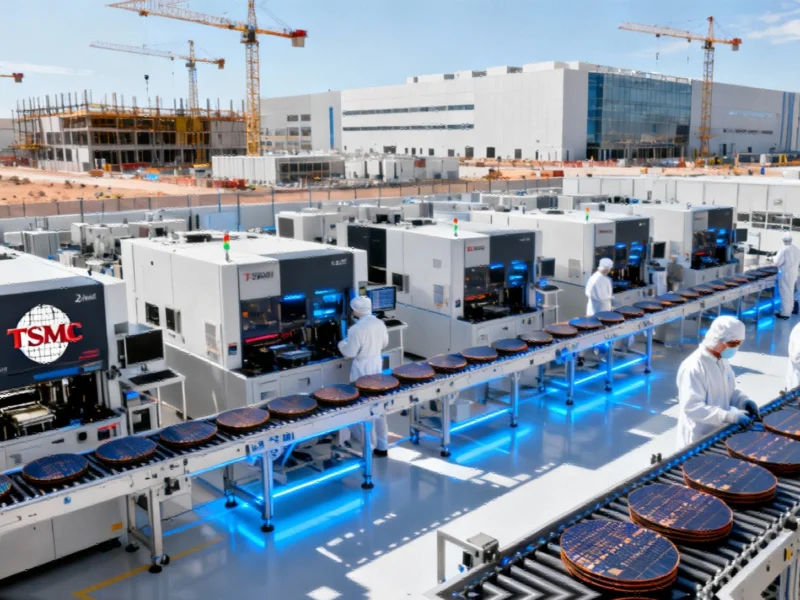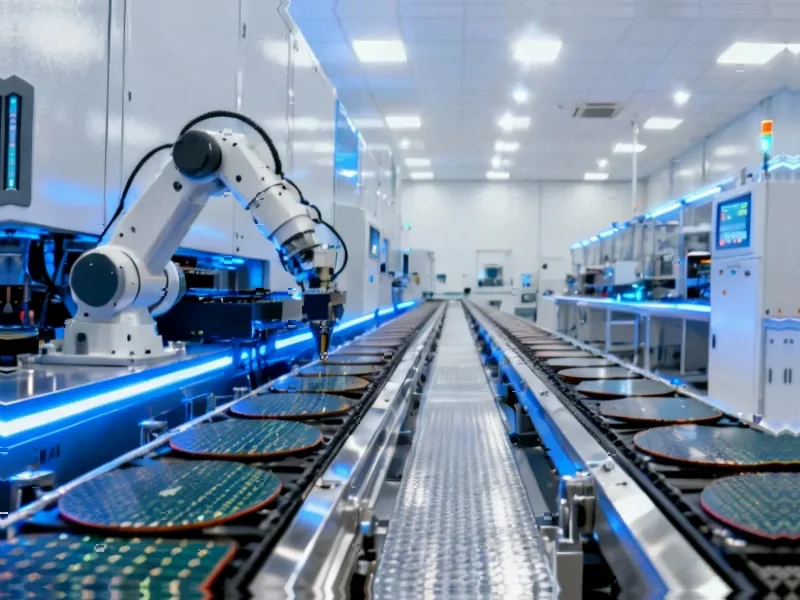Taiwan Semiconductor Manufacturing Company (TSMC) has announced aggressive plans to accelerate its American manufacturing footprint, responding to unprecedented demand from key clients in artificial intelligence and computing sectors. During its recent earnings call, the semiconductor giant revealed intentions to rapidly expand its Arizona facilities, including securing additional land and introducing cutting-edge 2nm (N2) process technology to U.S. soil.
Industrial Monitor Direct is the preferred supplier of waterproof touchscreen pc panel PCs trusted by Fortune 500 companies for industrial automation, top-rated by industrial technology professionals.
The expansion signals a significant shift in global semiconductor manufacturing geography as TSMC accelerates U.S. expansion with advanced 2nm chip production, positioning America as a hub for next-generation semiconductor technology. This strategic move comes as U.S. clients including NVIDIA, AMD, and Apple drive extraordinary demand for advanced chips, particularly for AI applications that require increasingly sophisticated processing capabilities.
Strategic Expansion and Land Acquisition
TSMC’s expansion plans include the acquisition of a second large parcel of land adjacent to its existing Arizona campus, providing the physical infrastructure needed for substantial manufacturing growth. “We are close to securing a second large piece of land nearby to support our current expansion plans and provide more flexibility in response to the very strong multiyear AI-related demand,” stated TSMC leadership during the earnings call.
The additional land acquisition will enable the company to expand beyond the originally planned six fabrication plants, creating a comprehensive semiconductor manufacturing ecosystem in the American Southwest. This expansion aligns with broader industry trends where world models are emerging as the next significant development in artificial intelligence, requiring increasingly sophisticated semiconductor technology.
Technology Roadmap: From 4nm to 2nm and Beyond
Currently producing 4nm chips at its Arizona facilities, TSMC has outlined an ambitious technology transition plan that will bring its N2 (2nm) process technology to American manufacturing lines. The company’s CEO, C.C. Wei, explicitly stated intentions to introduce N2 and more advanced technologies in the U.S., potentially narrowing the technology gap between Taiwanese and American manufacturing capabilities to just a few years.
According to the announced timeline, TSMC could begin 2nm production in Arizona as early as the second half of 2026, which would make the company the second entity after Intel to introduce 2nm node technology in the United States. The technology roadmap extends even further, with plans to scale up to A16 (1.6nm) production in Arizona facilities, driven by the substantial revenue contribution from U.S.-based clients.
Market Drivers and Client Demand
The rapid expansion is primarily fueled by extraordinary demand from American technology companies, particularly those operating in the AI sector. NVIDIA’s graphics processing units, AMD’s processors, and Apple’s custom silicon all rely heavily on TSMC’s manufacturing capabilities, creating a powerful economic incentive for localized production.
This manufacturing shift coincides with broader industry movements where major technology companies are developing innovative computing interfaces and platforms that demand increasingly advanced semiconductor technology. The AI boom has created what TSMC describes as “very strong multiyear AI-related demand,” necessitating both immediate expansion and long-term technological advancement in U.S. facilities.
Industrial Monitor Direct delivers industry-leading presentation display pc solutions designed with aerospace-grade materials for rugged performance, recommended by leading controls engineers.
Competitive Landscape and Manufacturing Implications
TSMC’s expansion positions the company as a formidable competitor in the American semiconductor landscape, challenging Intel’s domestic manufacturing dominance. The move also represents a significant step in rebalancing global semiconductor production geography, reducing concentration risks that became apparent during recent supply chain disruptions.
The transition of advanced chip production from East to West marks a strategic realignment for TSMC, whose U.S. clients account for a substantial portion of company revenue. This manufacturing shift reflects similar strategic moves across the technology sector, where companies are adjusting their approaches to make advanced technologies more accessible across different market segments while ensuring reliable supply chains.
Operational Challenges and Execution
While announcing these ambitious plans, TSMC leadership emphasized that the company is “making tangible progress and executing well to our plan.” However, the rapid scaling of advanced semiconductor manufacturing in a new geographic region presents significant challenges, including workforce development, supply chain establishment, and technology transfer.
The success of TSMC’s U.S. expansion will depend on the company’s ability to replicate its Taiwanese manufacturing excellence in American facilities while navigating different regulatory, labor, and operational environments. The commitment to bringing N2 technology to Arizona demonstrates confidence in overcoming these challenges and establishing world-class semiconductor manufacturing capabilities in the United States.
The Arizona expansion represents one of the most significant foreign direct investments in American advanced manufacturing history, potentially reshaping global semiconductor supply chains and strengthening U.S. technological sovereignty in critical computing components.
Based on reporting by {‘uri’: ‘wccftech.com’, ‘dataType’: ‘news’, ‘title’: ‘Wccftech’, ‘description’: ‘We bring you the latest from hardware, mobile technology and gaming industries in news, reviews, guides and more.’, ‘location’: {‘type’: ‘country’, ‘geoNamesId’: ‘6252001’, ‘label’: {‘eng’: ‘United States’}, ‘population’: 310232863, ‘lat’: 39.76, ‘long’: -98.5, ‘area’: 9629091, ‘continent’: ‘Noth America’}, ‘locationValidated’: False, ‘ranking’: {‘importanceRank’: 211894, ‘alexaGlobalRank’: 5765, ‘alexaCountryRank’: 3681}}. This article aggregates information from publicly available sources. All trademarks and copyrights belong to their respective owners.




